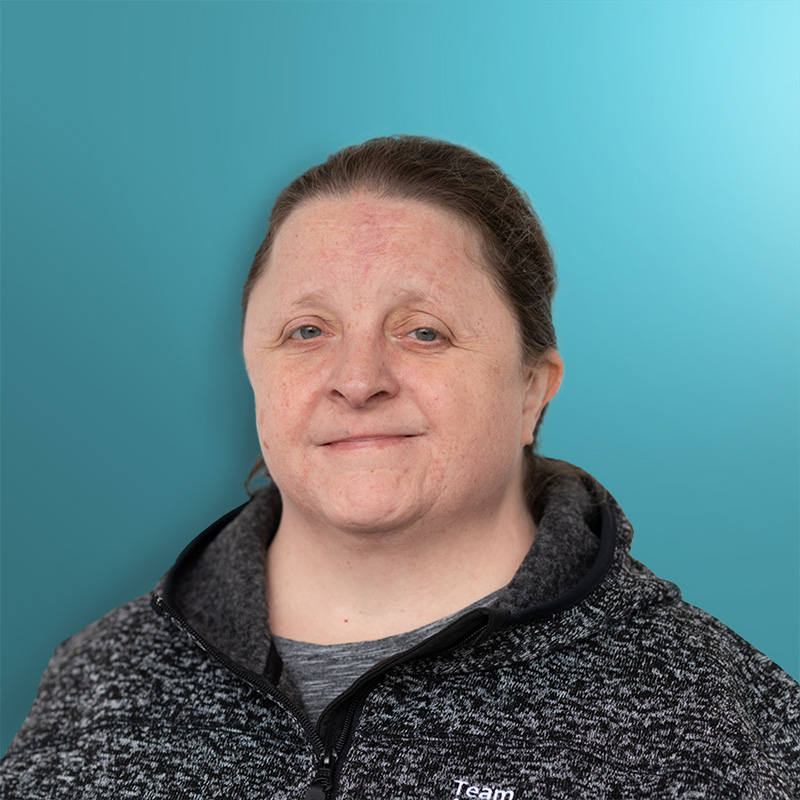Leisure


Leisure
Listening and enjoying time
At a time when “work-life balance” receives a lot of attention, being able to enjoy free time is hugely important. This is especially true for people with a hearing impairment who are in education of are in a job.
Travel, sport or culture – find out here how you can make the best out of all of these in your free time despite a hearing impairment!
Contents
Culture
![]() Everything around us is culture. We encounter it in nearly all everyday situations in life. Culture, from the Latin “cultura”, describes how people design, maintain, mentally configure and change their lives and how they live. So anything that is not natural, is culture. Most people, however, when they hear the word “culture”, immediately think of music, painting and art – important aspects of culture that should also be accessible to people with hearing impairments without barriers.
Everything around us is culture. We encounter it in nearly all everyday situations in life. Culture, from the Latin “cultura”, describes how people design, maintain, mentally configure and change their lives and how they live. So anything that is not natural, is culture. Most people, however, when they hear the word “culture”, immediately think of music, painting and art – important aspects of culture that should also be accessible to people with hearing impairments without barriers.
Audio technology
Large event venues often have acoustics which can have a negative effect on the comprehensibility of speech or clarity of music. Listening to voices and music at events like concerts, theatre productions, church services or presentations in large rooms is often difficult, especially for users of hearing aids and hearing implants. Echoes, background noises or other disruptive sounds can lead to the affected person not understanding little or nothing. Help can come through various audio technologies which enable audio signals to be received without interference into the audio processors of hearing solution users.
Induction
![]() With the installation of an induction appliance, the useful signal is transferred directly into the hearing system via a magnetic field. These sorts of systems are now available in many public places like cinemas, lecture rooms, churches, bank and ticket counters, in some countries even in taxis or buses for city tours – simple systems can of course be built into private houses to make, for example, TV sound available inductively.
With the installation of an induction appliance, the useful signal is transferred directly into the hearing system via a magnetic field. These sorts of systems are now available in many public places like cinemas, lecture rooms, churches, bank and ticket counters, in some countries even in taxis or buses for city tours – simple systems can of course be built into private houses to make, for example, TV sound available inductively.
Technically, an induction loop can be considered as a wire loop that runs around the edges of a room or a defined seating area. The input from a microphone or another signal source is then fed via the amplifier of the induction system into a wire loop, which generates an electromagnetic field. Audio-processors of hearing systems or implants that have an induction coil can pick up the alternating electromagnetic field and transform it into signals in the audio processor. This minimizes external interfering sounds. It is also possible for the user to further adjust signals if necessary through the volume control on their own audio processor
Users who want to receive that signal need to be within the wire loop and put their system into the appropriate reception mode: if you only want to hear those signals within the induction system, the mode is usually designated “T”, where the also common designation “MT” stands for the combination of signals from the induction loop and the microphone of the hearing system equally. The desired operation mode can also be selected by remote control for cochlear implant systems and some hearing aids.
In public areas, the presence of an induction loop is generally indicated with a corresponding sign pictogram. If you wish to reserve tickets for a theatre production or for the cinema, it is still sensible to find out about the availability of inductive hearing in advance.
In Austria, the Austrian Association of the Hearing Impaired has for some years provided on its web site lists of the public spaces it is aware of with hearing systems installed as a pdf file at https://www.oesb-dachverband.at/.
Radio systems
Whilst infra-red and radio appliance are usually used in private settings, schools mostly use FM systems.
Audio-Live-Streaming
Today, new technologies make it even easier for operators of cultural facilities and improve the sound quality for users. In this, the audio signal is transmitted directly to the personal smartphone using WLAN and an app. From there, you can listen to music either with headphones or by streaming into a hearing system via bluetooth or a personal induction loop, depending on what equipment the individual listener is using. Those without such equipment can borrow a mobile telephone with a pre-installed app and portable induction loop from the customer services – provided they have T-reception on their hearing system. You can find more information at https://de-at.sennheiser.com/
Since this technology is very recent, it is sensible to ask about the availability at the cultural facility of your choice in advance.
Audio guides
![]() Museums especially provide audio guides as standard which function as electronic museum guides and lead you through the museum or exhibition using sound recordings.
Museums especially provide audio guides as standard which function as electronic museum guides and lead you through the museum or exhibition using sound recordings.
You can find a selection of audio technologies which you can get yourself and are compatible with your hearing implant system here!
Reductions
Some cultural institutions offer reductions on production of a disabled ID. As there are no uniform rules, it is worth finding out in advance via the website to avoid any discussions at the venue.
Music
You can find out about the power of music, whatever kind you like, and what a high value it has to us as humans on the web site hoerenbewegt.at, which deals with the subject in detail.
Theatre & cinema
![]() A nice visit to the theatre, an entertaining and exciting evening in the cinema . You don’t have to miss out on that even with a hearing impairment. Many theatres provide high quality technical hearing support which can be connected to your hearing system.
A nice visit to the theatre, an entertaining and exciting evening in the cinema . You don’t have to miss out on that even with a hearing impairment. Many theatres provide high quality technical hearing support which can be connected to your hearing system.
Museum
![]() Museums offer people tremendously varied insights into the world of pictorial and visual art. There are opportunities all over the world to admire works from the beginning of human history to modern art. If you want to find out more about an exhibition or the individual works, you can join a tour with an art curator or borrow an audio guide, which is provided in several languages in most museums.
Museums offer people tremendously varied insights into the world of pictorial and visual art. There are opportunities all over the world to admire works from the beginning of human history to modern art. If you want to find out more about an exhibition or the individual works, you can join a tour with an art curator or borrow an audio guide, which is provided in several languages in most museums.
The audio guide can usually be linked with the MED-EL AudioLink and so can make the museum visit a visual and listening pleasure for users of hearing implant systems with SONNET or SONNET 2 audio processors as well.
Literature
“Literature must be fun. It must bring people joy, pleasure and fun and even happiness.”
Spiegel 25/2001
![]() Literature has a range of functions for us – entertainment, education, relaxation or excitement, a journey in time; in short, an adventure in your mind. Literature can be a further facet of hearing training if it is provided in the form of audio books.
Literature has a range of functions for us – entertainment, education, relaxation or excitement, a journey in time; in short, an adventure in your mind. Literature can be a further facet of hearing training if it is provided in the form of audio books.
If fairy tales help the very small to process development steps and school students in acquiring reading skills and developing their own powers of expression, high-brow literature is also an important component of personal development.
It is helpful as hearing training if the work is available in audio and unabridged form and in a verbatim identical printed version, that is as a download version or CD and also as a pdf or a book. This means that what is being heard can always be read at the same time. To make it easier, of course sections can be read in advance of listening to familiarize yourself with the text, and especially any proper nouns in the work. To listen to the audio book without reading is however recommended with appropriate practice.
It is of course important to ensure adequate speech quality in an audio book; musical or sound accompaniment can be evocative, but often make understanding more difficult.
If all of this is taken into account, there is nothing else standing in the way of enjoying literature and having adventures in your head, and your new hearing is being trained in a pleasant manner.
Travel
![]() Travel is probably one of the nicest free time activities. To see the world through other eyes, from new perspectives, to hear the world in all its variety, the enchanting noises of nature, foreign languages, exotic musical sounds. However, there are some obstacles for people with hearing impairments which can sometimes make a holiday challenging.
Travel is probably one of the nicest free time activities. To see the world through other eyes, from new perspectives, to hear the world in all its variety, the enchanting noises of nature, foreign languages, exotic musical sounds. However, there are some obstacles for people with hearing impairments which can sometimes make a holiday challenging.
Even the departure for the dream destination can prove difficult for some people, if, for example, there are unexpected airport announcements which it is important to understand. The guide in the favorite city speaks too quietly and is hard to see because of the large group. A jump into the cool water has to be carefully considered so that the audio processor of your implant system does not disappear into the depths, never to be seen again. The wind on the top of the mountain is blowing so strongly that you can no longer really enjoy the beautiful sounds of nature.
These, and probably many other situations, can make a holiday less than pure pleasure for affected persons.
So, if you wish to go on holiday with your hearing implant system, there are a few things you should think about so that the vacation is straightforward and unforgettable, despite the obstacles.
- Remember to take out holiday insurance for your hearing implant system so that a replacement is covered in the event of it being lost. You can find the contact details of the two insurance companies familiar with insuring hearing implant systems here! Online insurance form
- If you wish to travel to a remote area where the nearest service facility for your hearing aid is too far away, we recommend ordering a so-called vacation kit in good time before departure, so that you have spare parts and various accessories with you in case anything breaks on your system or so that your system is protected against the wet. The contact person in this case is the ZENTRUM HÖREN
- Traveling together with your partner, family or friends does not just mean sharing the experience, the company could also give support in difficult hearing situations and give confidence when far away from home.
Basically though: with your hearing implant system and some practice, future travel will be a guaranteed unforgettable experience and can once again be enjoyed more than they were in the past without sufficient hearing provision.
Sport
![]() Physical activity does not just make you slimmer, it is very healthy in a balanced amount, it is fun and like good hearing, improves your quality of life hugely.
Physical activity does not just make you slimmer, it is very healthy in a balanced amount, it is fun and like good hearing, improves your quality of life hugely.
So that your sporting enthusiasm is not dampened even with hearing implants, a few things need to be considered:
- You can enjoy swimming fun without barriers with MED-EL WaterWear protective covers, which are available for all audio processor types.
You can find information about this at medel.com/waterwear
You can order WaterWear protective covers at
at.shop.medel.com - You should try to avoid impacts around your implant. Constant heading in football, for example, can have a negative impact on the durability of your system.
- Wearing a helmet when skiing, cycling, mountaineering or climbing is definitely recommended, and this applies to everyone, even without hearing implants. Pay attention when choosing a helmet that the audio processor is not pressed upon and that the hearing is not restricted by the helmet case or padding.
- Sweating is of course a part of successful physical activity, but can sometimes be unpleasant for wearers of hearing systems. The current MED-EL audio processors have a spray-proof housing to protect against rain, sweat and moisture. So you no longer have to be worried about sweating and you can give full vent to your sporting enthusiasm.
- There are additional attachment possibilities for particularly active sportspeople so that your audio processor will not slip or get lost.
You can find information about this at medel.com/befestigungen
You can order these fixing options at at.shop.medel.com - Would you like to liven up your sport with your favorite music? No problem, all the audio technologies named above allow unrestricted enjoyment of music. Many users of hearing implant systems are very happy with so-called over-ear headphones. Along with the individual sound quality, the shape of the part surrounding the ear is also important to consider when purchasing the oval version, which in most cases does not press on the audio-processor, has proved its worth here.
Tips for everyday life
You can find some useful tips here that can make hearing in everyday life and at home easier!
- Textiles like curtains, carpets etc. absorb sound and reduce the reverberation of what has been heard.
- With good and sufficient light, you can see the person you are talking to better and that will certainly make communication easier.
- The right seating position at the dining table also makes it easier to understand all the family members at the table.
- in general, it is of great advantage to maintain direct view of the speaker’s face, so that what is said can be better understood. This is because facial expression also plays an important role in grasping what has been said; this applies to everyone, including normal-hearing people!
- Consideration of some conversation strategies like visual contact, distance, clarification, repetition, writing down etc can contribute to better understanding.
- A selection of technical additional devices such as alarm clock systems, doorbells, or house alarm systems can be found here!
- Do not always demand consideration from hearing people
- Be accepting and be patient with yourself.
Contacts
Persönlicher Kontakt zu Betroffenen
Die Möglichkeit, mit anderen NutzerInnen direkt in Kontakt zu treten, ist gerade am Anfang dieser besonderen Reise auf dem Weg zum (wieder) Hören wichtig für Betroffene. Hier finden Sie persönliche Kontakte, die sich gerne für unsere Website als BeraterInnen und zum Erfahrungsaustausch zur Verfügung gestellt haben – denn Hören verbindet!




















